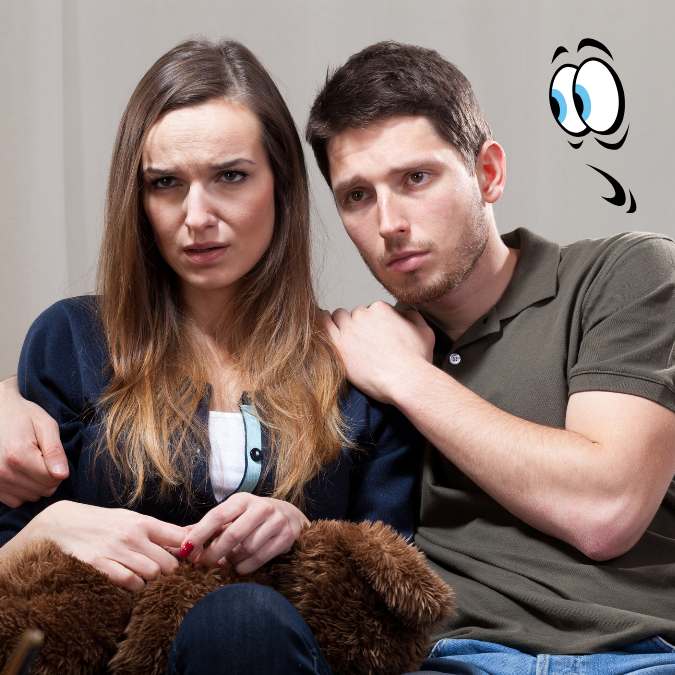
When we think of horror, we imagine ghosts, monsters, killers, and blood-curdling screams. But sometimes, the most disturbing moments come from the last places we’d expect — a comedy, a romance, or even an animated film.
These are the moments that make you pause, feel uneasy, and wonder why you suddenly got chills, even though you weren’t watching a horror movie. They remind us that true fear doesn’t always come from supernatural creatures — it often hides in everyday situations, emotional tension, or sudden glimpses of darkness in ordinary stories.
In this article, we’ll explore the fascinating world of non-horror movies and series with terrifying or deeply unsettling scenes, analyzing why they affect us so strongly and how filmmakers use subtle tools to evoke dread without resorting to jump scares or gore.
Why Do Non-Horror Scenes Scare Us? 🧠
Fear is one of the most powerful emotions in cinema. But real fear doesn’t always need monsters or violence — it can come from silence, atmosphere, or the sense that something is not quite right.
Psychologists explain that fear emerges when our brains detect uncertainty, vulnerability, or loss of control. That’s why even a cheerful movie can suddenly feel terrifying if it presents a situation that taps into deep human anxieties — isolation, death, madness, or betrayal.
Filmmakers who master this kind of subtle terror understand that:
- Ambiguity (not showing the threat) is scarier than revealing it.
- Contrast (between lighthearted and dark moments) shocks the viewer more.
- Familiar settings make the horror relatable — because it feels like it could happen to us.
Let’s look at some unforgettable examples of these moments of terror in places we least expect them.
1. Mulholland Drive (2001) – The Diner Scene ☕😨
David Lynch’s Mulholland Drive isn’t labeled as a horror movie, yet it contains one of the most frightening scenes in cinema history — and it takes place in broad daylight, outside a simple diner.
In the scene, two men talk casually about a nightmare one of them had involving a terrifying figure behind the diner. As they go to check, the tension grows unbearably thick, and when the figure finally appears, the shock is pure existential horror.
What makes this moment so unsettling is that nothing supernatural happens — but everything about it feels wrong. The pacing, the sound, and the dreamlike logic all combine to create a nightmare that feels real.
2. Willy Wonka & the Chocolate Factory (1971) – The Boat Tunnel Ride 🍫🚤
This beloved family classic suddenly takes a disturbing turn during the infamous boat tunnel scene.
As Willy Wonka (played by Gene Wilder) takes the children on a boat ride, the cheerful music stops and gives way to distorted colors, flashing lights, and horrifying imagery, including shots of insects and a chicken’s head being cut off. Wonka begins reciting a poem in a manic voice, blurring the line between whimsy and insanity.
For many children — and even adults — this moment feels deeply wrong. It’s a perfect example of how madness and unpredictability can make a seemingly innocent character terrifying.
3. Requiem for a Dream (2000) – The Final Montage 💉💔
Requiem for a Dream is technically a psychological drama about addiction, but its final sequence is as horrifying as any horror movie ending.
As the characters’ lives spiral into despair, the editing becomes rapid and chaotic. The music — Clint Mansell’s unforgettable Lux Aeterna — builds unbearable tension. The result is a nightmarish vision of human suffering that leaves viewers shaken long after the credits roll.
There are no monsters here, only the horror of real life, addiction, and loss of control — which makes it even more devastating.
4. Breaking Bad (2008–2013) – “Look at Me!” 💣
Breaking Bad is a crime drama, not a horror series. But several scenes across its five seasons deliver pure psychological terror.
One of the most disturbing moments comes in Season 4, when Gus Fring visits a rival cartel. In an iconic scene, Gus calmly poisons an entire room of drug lords — then walks out of the building after vomiting, as if nothing happened.
The horror doesn’t come from the violence itself, but from Gus’s cold composure. His lack of emotion turns him into something almost inhuman — a quiet, rational monster operating in plain sight.
5. Twin Peaks: Fire Walk with Me (1992) – Laura’s Bedroom 👁️
David Lynch appears again — and for good reason. His work thrives on the unsettling and the surreal.
In Twin Peaks: Fire Walk with Me, the scene where Laura Palmer realizes that the demonic figure haunting her dreams is actually someone she knows in real life is truly horrifying. The horror is psychological, not graphic — it’s the moment of recognition that evil isn’t supernatural, but terrifyingly human.
It’s one of those moments when you hold your breath without realizing it, because you feel her dread.
6. No Country for Old Men (2007) – Anton Chigurh and the Coin Flip 💀
This Coen Brothers masterpiece is a crime thriller — but it contains a scene so tense that it feels like horror.
When hitman Anton Chigurh (played chillingly by Javier Bardem) confronts a gas station owner, he flips a coin to decide whether the man lives or dies. The calm dialogue, the quiet setting, and Chigurh’s cold stare make it one of the most terrifying encounters in modern cinema.
What’s frightening is not what happens — it’s what could happen. The randomness of fate and death, combined with Chigurh’s detached demeanor, creates existential dread.
7. The Social Network (2010) – The Birth of Isolation 💻🧊
At first glance, The Social Network is a biographical drama about Mark Zuckerberg and Facebook’s creation. Yet beneath the legal battles and coding sequences lies something darker — the emotional horror of disconnection.
The final scene, in which Zuckerberg sits alone refreshing his ex-girlfriend’s Facebook profile, is hauntingly empty. The silence speaks louder than any scream. It’s the horror of success without meaning — of being surrounded by people, yet completely alone.
This subtle, psychological unease is a reminder that modern technology can breed emotional isolation, one of today’s deepest fears.
8. BoJack Horseman (2014–2020) – “The View from Halfway Down” 🕳️🐴
This animated series, known for its humor and absurdity, took a terrifying turn in its penultimate episode.
In “The View from Halfway Down,” BoJack experiences a surreal, dreamlike dinner party that gradually becomes a disturbing meditation on death and regret. The episode blends humor, surrealism, and psychological horror in a way that’s deeply unsettling — especially when BoJack realizes he may be dying.
The fear here isn’t from monsters or violence, but from the inevitability of death and the weight of one’s choices.
9. The Truman Show (1998) – The Moment of Realization 📺🌍
Jim Carrey’s The Truman Show is a clever satire, but one scene captures the pure horror of losing your sense of reality.
When Truman begins to suspect that his world is fake, and discovers the truth — that his entire life is a TV show — it’s an existential nightmare.
The horror here is philosophical: the idea that your life has been controlled, observed, and scripted by others. It touches on one of humanity’s deepest fears — that our reality might not be real at all.
10. The Sopranos (1999–2007) – Tony’s Coma Dream ☁️🔫
In Season 6, Tony Soprano’s coma-induced dream sequence stands out as one of television’s eeriest moments.
In it, Tony believes he’s someone else, trapped in a surreal world filled with strange clues and familiar faces. The calm pacing and cryptic atmosphere create an uncanny sense of dread — a feeling that death is close, and the line between life and dream has disappeared.
Even without ghosts or monsters, The Sopranos explores the horror of losing oneself, of no longer knowing who you are.
The Psychology Behind Unintentional Fear 🧬
Why do these scenes haunt us more than traditional horror? Because they touch something deeply human and real.
Here’s what makes them work:
- Ambiguity – We fear what we don’t understand.
- Contrast – The shift from calm to chaos shocks the brain.
- Empathy – We identify with the characters’ confusion or fear.
- Symbolism – Ordinary objects or situations become unsettling metaphors.
This type of fear doesn’t make us scream — it makes us think, long after the movie ends.
Conclusion: The Scariest Places Are Often the Most Familiar 🕯️
True terror doesn’t always come with monsters or blood. Sometimes it hides in a cheerful song, a friendly face, or a sunny afternoon.
The most unsettling scenes are those that remind us that fear can exist anywhere, even in laughter, love, or everyday life. They make us aware of the fragility of our minds, our illusions, and our sense of control.
So next time you’re watching a comedy, a drama, or even a kids’ movie… and you suddenly feel a chill down your spine — don’t worry. You’re not imagining it. That’s the terror in unexpected places doing its quiet, powerful work. 👁️🎥
Sources 📚
- Lynch, David. Mulholland Drive. Universal Pictures, 2001.
- Wilder, Gene. Willy Wonka & the Chocolate Factory. Paramount Pictures, 1971.
- Aronofsky, Darren. Requiem for a Dream. Artisan Entertainment, 2000.
- Gilligan, Vince. Breaking Bad. AMC, 2008–2013.
- Coen Brothers. No Country for Old Men. Miramax, 2007.
- Fincher, David. The Social Network. Columbia Pictures, 2010.
- Bob-Waksberg, Raphael. BoJack Horseman. Netflix, 2014–2020.
- Weir, Peter. The Truman Show. Paramount Pictures, 1998.
- Chase, David. The Sopranos. HBO, 1999–2007.

